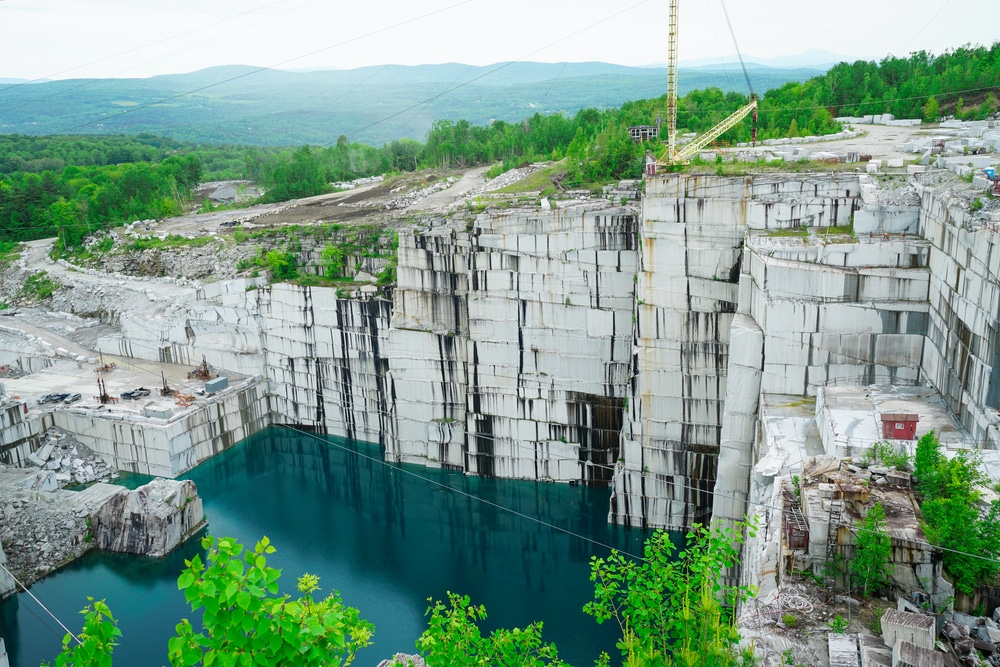Travelling Via Granite Quarries in South Africa: A Visual Odyssey
Travelling Via Granite Quarries in South Africa: A Visual Odyssey
Blog Article
Introducing the Mysteries of Granite Quarrying: Where Strength and Style Meet
The world of granite quarrying is a world where the raw toughness of nature assembles with human creativity to develop structures that stand the test of time with an air of style. From the midsts of quarries to the precise sprucing up in workshops, the procedure of changing granite into architectural marvels is a complicated dance of practice and advancement. As we peer into the midsts of this ancient craft, we begin to discover the concealed details that form the very essence of our developed setting.
The Beginnings of Granite Quarrying
In the record of building background, the beginnings of granite quarrying are shrouded in a tapestry of ancient craftsmanship and geological marvels. Dating back to ancient Egypt and Mesopotamia, the removal of granite from quarries noted the beginning of a journey that would eventually cause the production of several of the globe's most legendary frameworks.
Granite quarrying's origins can be mapped to the competent craftsmens that acknowledged the rock's longevity and visual allure. Via a mix of primitive devices and large resolution, these very early quarry workers uncovered granite blocks that would certainly become the foundation of people.
As worlds advanced, so did the techniques of quarrying granite. The Romans, renowned for their design expertise, established sophisticated techniques for extracting granite to construct monoliths, holy places, and roadways that stood the test of time.
The legacy of these old quarrying techniques continues to shape contemporary design, with granite remaining a sign of toughness and elegance in building and construction tasks around the world. (granite quarries in south africa)
Devices of the Quarrying Profession
The evolution of granite quarrying techniques from old people to modern times highlights the vital role played by the devices of the quarrying sell shaping the industry's techniques. In old times, quarrying tools were simple, typically consisting of knives, hammers, and wedges made from materials like bronze or iron. These tools called for considerable manpower and time to remove granite blocks from quarries.

Furthermore, the intro of pneumatically-driven devices and high-powered equipment has actually dramatically lowered the physical labor required in quarrying procedures, boosting employee safety and security and productivity. As the quarrying industry continues to introduce, the tools of the trade remain at the forefront of driving progress and shaping the future of granite removal.
Removing Blocks of Granite
Making use of accuracy machinery and advanced techniques, the removal of granite blocks from quarries has become a sophisticated procedure in the modern-day quarrying market. The preliminary step involves recognizing the place and size of the granite deposit to determine one of the most efficient removal approach. When an appropriate site is he said selected, the removal procedure begins with the exploration of openings for the placement of explosives. Controlled blasting strategies are after that employed to disintegrate the granite right into workable sections.

Sprucing Up and Completing Methods
To achieve a remarkable surface area on granite blocks, competent artisans use a collection of careful polishing and ending up strategies. After the preliminary extraction and forming processes, the granite blocks undertake a thorough sprucing up phase to enhance their all-natural charm and resilience. One usual technique used in brightening granite is ruby abrasion, where commercial diamonds are made use of to grind and polish the rock to a smooth surface. This process not just produces a lustrous surface area but also makes certain uniformity in shade and structure across the granite block.
Along with polishing, ending up techniques are related to more fine-tune the granite's look. These methods may consist of flaming, honing, or brushing, each offering one-of-a-kind textures and surfaces to fit various aesthetic preferences. Flaming, for circumstances, involves exposing the granite surface to high temperature levels to create a rough, distinctive finish, suitable for outdoor applications where slip-resistance is essential. Refining, on the other hand, offers a go to the website matte surface that is smooth to the touch, excellent for interior countertops and flooring. By very carefully picking and using these brightening and finishing techniques, artisans can transform raw granite blocks into splendid pieces that showcase both stamina and look at here now sophistication.

Ecological Effect and Sustainability
With the growing focus on ecological consciousness in the market, granite quarrying techniques are increasingly inspected for their influence on natural resources and lasting sustainability. Additionally, the transport of granite from quarries to refining centers generates carbon discharges, additionally adding to ecological degradation.
To reduce these influences and ensure sustainability in granite quarrying, industry stakeholders are embracing different actions. Executing sophisticated modern technologies to reduce energy consumption and water usage, recovering quarried land for environmental reconstruction, and advertising responsible sourcing methods are some methods being utilized. Qualifications such as the Woodland Stewardship Council (FSC) and the Management in Energy and Environmental Design (LEED) help consumers identify eco pleasant granite items.
Final Thought
In conclusion, granite quarrying is a procedure that calls for specialized devices and methods to extract blocks of granite and brighten them to a high level of finish. While the ecological effect of quarrying can be considerable, initiatives are being made to enhance sustainability practices in the sector. In general, granite quarrying is a delicate equilibrium between harnessing the toughness and beauty of this all-natural rock while lessening its effect on the setting.
Report this page